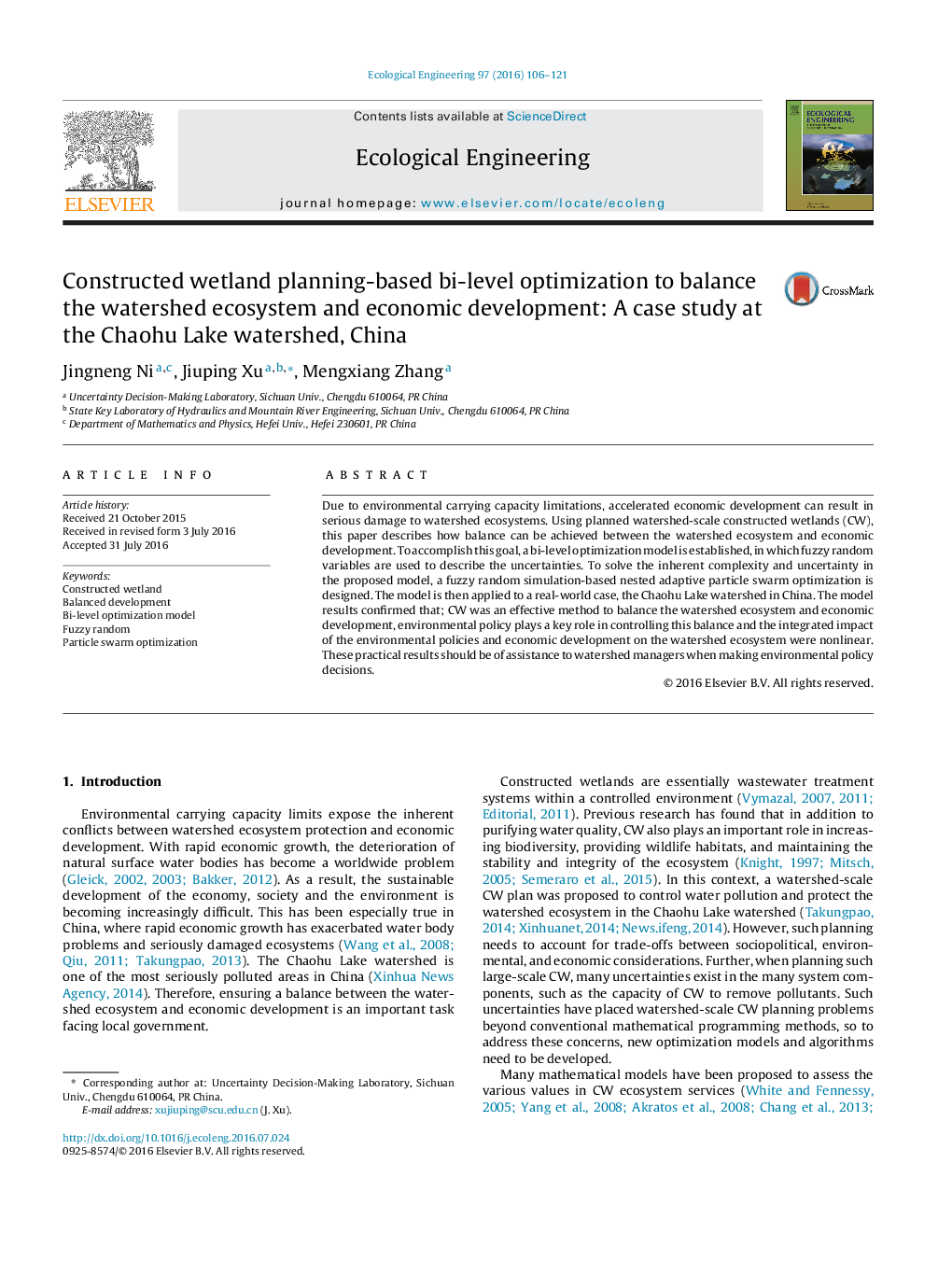| Article ID | Journal | Published Year | Pages | File Type |
|---|---|---|---|---|
| 4388371 | Ecological Engineering | 2016 | 16 Pages |
Abstract
Due to environmental carrying capacity limitations, accelerated economic development can result in serious damage to watershed ecosystems. Using planned watershed-scale constructed wetlands (CW), this paper describes how balance can be achieved between the watershed ecosystem and economic development. To accomplish this goal, a bi-level optimization model is established, in which fuzzy random variables are used to describe the uncertainties. To solve the inherent complexity and uncertainty in the proposed model, a fuzzy random simulation-based nested adaptive particle swarm optimization is designed. The model is then applied to a real-world case, the Chaohu Lake watershed in China. The model results confirmed that; CW was an effective method to balance the watershed ecosystem and economic development, environmental policy plays a key role in controlling this balance and the integrated impact of the environmental policies and economic development on the watershed ecosystem were nonlinear. These practical results should be of assistance to watershed managers when making environmental policy decisions.
Related Topics
Life Sciences
Agricultural and Biological Sciences
Ecology, Evolution, Behavior and Systematics
Authors
Jingneng Ni, Jiuping Xu, Mengxiang Zhang,
